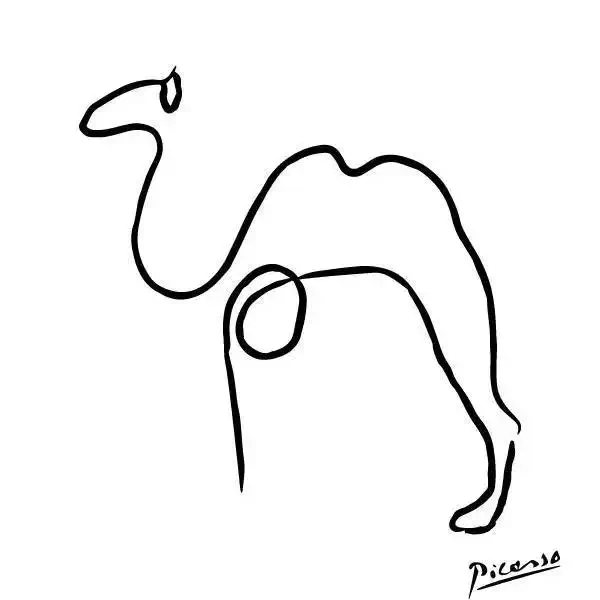
“Other Minds, and Eleven Camels”
by Olga Hartwell, MDiv., delivered on Olga’s behalf at Emmanuel Church, Newport, Rhode Island, July 10, 2023
Good morning. Please pray with me. May the words of my mouth, and the meditations of all our hearts, be acceptable to you, oh, Lord, our rock and our redeemer. Amen.
I want to start this morning by putting forward a fresh candidate for the best first line of a novel, ever.
Here it is.
“‘Take my camel, dear,’ said my aunt Dot, climbing down from that animal on her return from high Mass.”
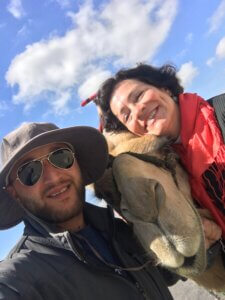 Yes, you heard it correctly: [Repeat] This is the opening of The Towers of Trebizond, by Rose Macaulay. It’s simply brilliant. Twenty well-chosen words, and your mind is off to the races, doing one of it absolute favorite activities: figuring people out. Who is this proper, religious maiden aunt English lady, and why is she riding a camel to church? And who is the “dear” who’s “taking” the camel, the “dear” who presumably knows what to do with one of these fine animals after it’s been cooling its heels for an hour in a church parking lot? You may be curled up in your coziest reading chair, but your mind is in happy overdrive. It’s picking up signals, interpreting signs, figuring out who these characters are, what they’re up to and why, and whether you want to spend more time with them. In fact, your mind is doing exactly what it does when it encounters real people, in real life. We collect up observable data. Then we turn it over, examine it, and fit it together, in order to get at something we can’t perceive directly: the insides of other people’s heads.
Yes, you heard it correctly: [Repeat] This is the opening of The Towers of Trebizond, by Rose Macaulay. It’s simply brilliant. Twenty well-chosen words, and your mind is off to the races, doing one of it absolute favorite activities: figuring people out. Who is this proper, religious maiden aunt English lady, and why is she riding a camel to church? And who is the “dear” who’s “taking” the camel, the “dear” who presumably knows what to do with one of these fine animals after it’s been cooling its heels for an hour in a church parking lot? You may be curled up in your coziest reading chair, but your mind is in happy overdrive. It’s picking up signals, interpreting signs, figuring out who these characters are, what they’re up to and why, and whether you want to spend more time with them. In fact, your mind is doing exactly what it does when it encounters real people, in real life. We collect up observable data. Then we turn it over, examine it, and fit it together, in order to get at something we can’t perceive directly: the insides of other people’s heads.
We are social creatures, so our capacity to “read” other minds this way is an essential skill for survival. Fortunately, we like doing it. One of the great pleasures of fiction is that it engages us in exactly this process, without the risks and pitfalls that arise when we read other minds in real life. We don’t have to worry that Aunt Dot – who sounds like she may be a little nutty – will take one look at us, hop back on her camel, and run us over. When you’re dealing with actual humans, on the other hand, it can be pretty important to get the mind-reading right.
Consider Abraham’s servant, arriving in a foreign land, hundreds of miles from home, with the mission to bring back a bride for Abraham’s son. This sounds like a terrible assignment. Difficult; high stakes; huge downside. Things probably won’t go very well if he brings back a bride that Isaac – or Abraham – doesn’t like. But how is he going to choose? He can see with his own eyes whether a woman is beautiful, but that’s about it. The inner workings are opaque to him. Is she kind, patient, industrious, open-minded? In an unfamiliar country, amid people he doesn’t know, how on earth is he going to figure any of this out?
Abraham’s servant solves this conundrum by asking God for a set of observable signs – things he can see – that will serve as confirmation that he’s made the right choice.
“‘O Lord,’” he says, “‘I am standing here by the spring of water, and the daughters of the townspeople are coming out to draw water. Let the young woman to whom I shall say, “Please offer your jar that I may drink, and who shall say, “Drink, and I will water your camels” – let her be the one whom you have appointed for … Isaac.’”[i]
He’s a smart man, Abraham’s servant. This isn’t one of those silly signs, one of those “the first person who comes out of the city gates” kind of signs that so often end in disaster. The servant leaves room for his own initiative: he gets to choose the woman he asks for a drink. And the events he’s outlined – the woman not only gives him a drink, but volunteers to water his camels – are solid indicators that she is helpful, hospitable, friendly, and open of heart. Such a good plan. It almost makes you think it just takes a little thought and energy, figuring other people out.
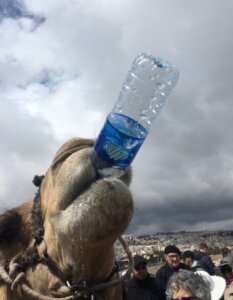 Almost … but not quite. Because do you know how much water a camel drinks in one sitting? Thirty gallons. That’s right. Yes, it’s true that a camel can go a week or more without drinking at all. But when it gets a chance to refill the tank? Thirty gallons. It takes about fifteen minutes. Thirty gallons, down the hatch. And do you remember how many camels Abraham’s servant brought on this trip? Ten. Ten camels, thirty gallons each … you do the math.
Almost … but not quite. Because do you know how much water a camel drinks in one sitting? Thirty gallons. That’s right. Yes, it’s true that a camel can go a week or more without drinking at all. But when it gets a chance to refill the tank? Thirty gallons. It takes about fifteen minutes. Thirty gallons, down the hatch. And do you remember how many camels Abraham’s servant brought on this trip? Ten. Ten camels, thirty gallons each … you do the math.
“So I drank,’” Abraham’s servant reports afterwards to Rebekah’s brother, Laban, “‘and she also watered the camels.’” In other words, he’s telling Rebekah’s brother that he stood around in the shade, having a nice drink of water, while Rebekah toted her five-gallon water jug back and forth in the hot sun, let’s see … sixty times? At this point, Laban should have punched Abraham’s servant, not given him dinner. Not to mention that Laban may have wondered why the servant, standing by the spring, couldn’t have gotten his own drink. Surely, somewhere among his ten camels, he’d remembered to pack a cup.
It turns out that this story isn’t about Abraham’s servant coming up with a clever way to discern Rebekah’s friendliness, hospitality, or work ethic. It’s not about his successful effort to read another person’s mind. It’s about divine intervention. How do I know that? I know it because divine intervention is what it would take for one young woman, equipped with a single jug, to water ten thirsty camels while their owner had a cool drink. Laban, hearing the story from his sister, would have recognized the hand of God. That’s why he ran down to the spring to invite Abraham’s servant, and his ten camels, to stay at his house.
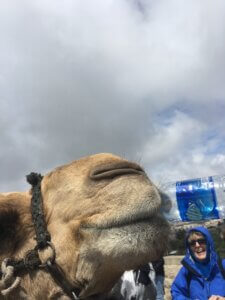 Abraham’s servant was smart – just not in the way you might think. He was smart enough to realize that he was way out of his depth. If he’d wandered in among strangers and relied on his own perceptions and intuitions to choose a bride for Isaac, he easily could have ended up taking the town’s prime troublemaker back to his master’s house. Yes, figuring out what other people are up to is an important skill – but we aren’t actually that good at it, and it doesn’t much to scramble the signals. Abraham’s servant was smart enough – and humble enough – to know his own limits, and to seek God’s help.
Abraham’s servant was smart – just not in the way you might think. He was smart enough to realize that he was way out of his depth. If he’d wandered in among strangers and relied on his own perceptions and intuitions to choose a bride for Isaac, he easily could have ended up taking the town’s prime troublemaker back to his master’s house. Yes, figuring out what other people are up to is an important skill – but we aren’t actually that good at it, and it doesn’t much to scramble the signals. Abraham’s servant was smart enough – and humble enough – to know his own limits, and to seek God’s help.
But most of us tend to be overly confident in our ability to know what’s going on in other people’s heads. We read the tea leaves, interpret the signs, deploy our “Spidey sense.” And then we’re pretty sure we know what’s what.
Kind of like the children Jesus mentions in our reading from Matthew’s gospel, the children sitting in the marketplaces.[ii]
“See those people over there?” we might say. “We played the flute for them. And they didn’t dance. Unbelievable. There we were, playing the flute, trying to be friendly, trying to lighten things up, and they just sat there, staring at us like we had three heads. So rude. They have a terrible attitude.”
Often, our interpretations are incorrect. For all we know, the grumpy, non-dancing people may be employees of a company that’s just announced it’s closing its local plant. But we take in the signs, interpret them, draw conclusions – and forget that our inferences may be completely wrong.
Just like Jesus’ crowd.
“‘For John came neither eating nor drinking, and they say, “He has a demon”; the Son of Man came eating and drinking, and they say, “Look, a glutton and a drunkard, a friend of tax collectors and sinners!””[iii]
These errors matter. Philosopher Martha Nussbaum, writing about Virginia Woolf’s To the Lighthouse, points out that the problem of other minds isn’t simply an epistemological problem – a problem of evidence and certainty – but an ethical one, produced by the motives and desires with which we approach other people.[iv] When we blithely misread people, forgetting their fundamental separateness, disregarding their own independent, mysterious center of being, we aren’t just making a mistake of fact. The mistake is a moral one, and the injury real – even when you aren’t disparaging John the Baptist, or the Son of God.
What to do? Nussbaum draws guidance from the portrait of the long-married couple at the center of Woolf’s novel.[v] The Ramsays’ mutual understanding is deeper, Nussbaum suggests, because they approach one another with humility and reverence. Their efforts to understand one another are grounded in love, trust, and mutual need. They recognize the limits on their understanding of each other’s minds; and they respect each other’s separate, and at some level unknowable, inner lives.
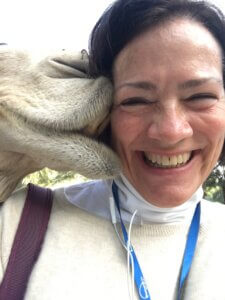 “‘Take my camel, dear,’ said my aunt Dot, climbing down from that animal on her return from high Mass.” Of course we’ll all go on trying to make sense of each other, trying to figure out who’s who, what’s what, and what it all means to us. As far as Aunt Dot is concerned, we can go for it: we can speculate, ruminate, extrapolate; we can let our minds roam wide and free. But when we turn our attention to an actual human being, let’s follow the excellent example of Abraham’s servant, bearing in mind our limitations and seeking God’s help. Let’s learn from Jesus, who is “‘gentle and humble in heart,’” and be aware that our intuitions about other people are guesses, not facts. And let’s remember what we do know for sure: that every single person is a beloved child of God.
“‘Take my camel, dear,’ said my aunt Dot, climbing down from that animal on her return from high Mass.” Of course we’ll all go on trying to make sense of each other, trying to figure out who’s who, what’s what, and what it all means to us. As far as Aunt Dot is concerned, we can go for it: we can speculate, ruminate, extrapolate; we can let our minds roam wide and free. But when we turn our attention to an actual human being, let’s follow the excellent example of Abraham’s servant, bearing in mind our limitations and seeking God’s help. Let’s learn from Jesus, who is “‘gentle and humble in heart,’” and be aware that our intuitions about other people are guesses, not facts. And let’s remember what we do know for sure: that every single person is a beloved child of God.
Amen.
[i] Gen. 24:12-14.
[ii] Mt. 11:16-17.
[iii] Mt. 11:18-19.
[iv] Nussbaum, “The Window,” 744.
[v] Nussbaum, “The Window,” 744-49.
Bibliography
The New Oxford Annotated Bible: New Revised Standard Version with the Apocrypha, Fourth Edition. New York: Oxford University Press, 2010 (Kindle edition).
Nussbaum, Martha. “The Window: Knowledge of Other Minds in Virginia Woolf’s To the Lighthouse.” New Literary History 26, no. 4 (Autumn, 1995): 731-53.
